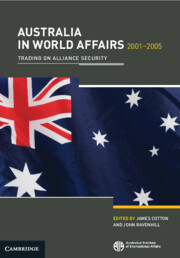Book contents
- Frontmatter
- Contents
- Illustrations
- Contributors
- Preface
- Abbreviations
- Part 1 The Foreign Policy Scene
- Part 2 Relationships
- Part 3 Issues
- Part 4 Foreign Policy in the Political Process
- 13 Neither Entirely Comfortable nor Wholly Relaxed: Public Opinion, Electoral Politics, and Foreign Policy
- 14 Parliament and Foreign Policy
- 15 After the Flood: Foreign Policy and the Management of Intelligence
- Survey Sources
- References
- Index
14 - Parliament and Foreign Policy
from Part 4 - Foreign Policy in the Political Process
Published online by Cambridge University Press: 04 May 2024
- Frontmatter
- Contents
- Illustrations
- Contributors
- Preface
- Abbreviations
- Part 1 The Foreign Policy Scene
- Part 2 Relationships
- Part 3 Issues
- Part 4 Foreign Policy in the Political Process
- 13 Neither Entirely Comfortable nor Wholly Relaxed: Public Opinion, Electoral Politics, and Foreign Policy
- 14 Parliament and Foreign Policy
- 15 After the Flood: Foreign Policy and the Management of Intelligence
- Survey Sources
- References
- Index
Summary
The Australian Federal Parliament stands magnificently atop Constitution Hill in Canberra as a symbol of the importance Australia attaches to its long and strong democratic tradition. The semiotic message of the Parliament’s architecture is that this is a people’s place, ‘a publicly accessible monument’, a place where its visitors will be as much a part of the fabric of its business as the business of the legislature. The Parliament has used technology to match this physical accessibility such that never has there been a period when greater access to the business and deliberations of the Parliament has been more possible. This accessibility has, however, been matched in the period under review by increasing physical constraints and barriers to access never envisaged at its creation: for the first time in the history of the Commonwealth, the Parliament was closed to the people – on the occasion of the visit of President George W. Bush in October 2003. In this way, the Parliament stands also as a symbol of the way the world has changed since the bombings of the twin towers in September 2001.
Keywords
- Type
- Chapter
- Information
- Australia in World Affairs 2001–2005Trading on Alliance Security, pp. 261 - 280Publisher: Cambridge University PressFirst published in: 2024



